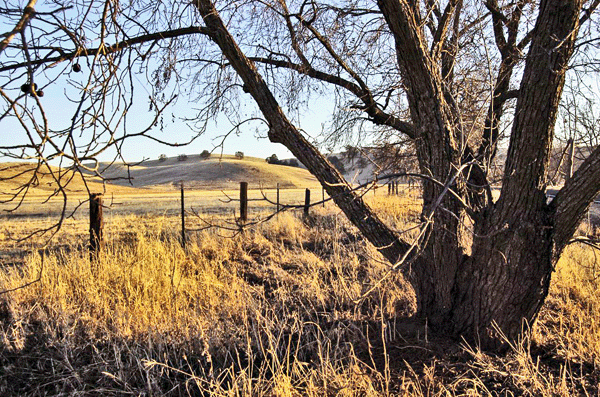I’ve lived in California my entire life and have traveled on many a back road enjoying the scenery, the trees, the flowers and the birds. Discovering a new road, the road less traveled, is half the fun of any journey. It was close to sunset recently when I found myself on one of those roads. Actually I kind of got lost on my way to Aunt Rosemary’s house and ended up on the back side of Mt. Diablo. Serendipity, the occurrence of events by chance in a happy or beneficial way, was on my side.
With the winter sun skimming the tops of the rolling hills and a meadowlark announcing his presence in the row of walnut trees growing along the road I was reminded of the seasons here in the mild winter areas of California. The setting sun filtered through the grasses tawny in late fall. These grasses are just one of the many ornamental grasses that grace our gardens. With winter coming on, some go dormant, some are evergreen and some are deciduous. How should you take care of the grasses in your garden?
If your grass is big like a miscanthus and now sports that beautiful wheat color as it goes dormant, you can enjoy the show to provide structure to the winter garden as well as seed and cover for wildlife. Come February or early March, before new growth starts from the base, tie the stems into a bundle with twine or a bungee cord and prune down to 10 inches using sharp hedge shears or electric hedge pruning shears.
But what about those other grasses and grass-like plants? How do you keep them neat looking and fresh throughout the year?
If it’s small and goes dormant, like Japanese forest grass, Japanese blood grass or Fountain grass, you can prune them anytime from now until early spring. I like to leave them to provide winter interest through the holidays, but there will come a day in January when the winter storms will start blowing the leaves everywhere. Then I’ll prune the stems down to 3 inches for the shorter grasses or 6 inches for the taller fountain grasses. If I prune too low, there’s a danger of cutting into the crown of the plant. Moisture then tends to settle into the crown and can rot them out.
Then there are the spiky grass-like plants like New Zealand flax or Cordyline that stay evergreen but can look ratty after a long, hot summer or cold winter. Prune these anytime for cleanup or size reduction, or mid-spring for rejuvenation.
Select the oldest or most damaged leaves and cut them from the base out one by one. To control size, cut out no more than two-thirds of the tallest leaves at the base. If your plant has severe damage and needs total rejuvenation, wait until mid-spring and cut down to 1 foot. It will re-grow in about four months but may need re-trimming as the leaves grow out.
Lastly, there are those small grasses that stay evergreen such as Blue oat grass, Pheasant tail grass, Acorus, Mondo grass, Carex, Mexican feather grass and Liriope. Like the flaxes, clean up can be done anytime, but pruning for rejuvenation should be done early- to mid-spring.
If your grass is looking a bit disheveled, comb out the old stems. Rubber gloves work great for this as the spent foliage clings to the rubber and comes out easily.
If you need to go for the big chop to bring it back to its former glory, wait until early spring and cut back by two-thirds. Again, cutting back too much will allow moisture to gather in the crown and cause rot.
Rejuvenation pruning shouldn’t be done more than every 2 to 3 years as small evergreen grasses have less vigor than grasses that go dormant. Mexican feather grass is the exception and can be pruned back hard anytime it’s needed.
So that’s all there is too it. Decide if your grass is large and goes dormant, small and goes dormant or large and stays evergreen and take it from there for beautiful ornamental grasses year-round.
– Jan Nelson, a landscape designer and California certified nursery professional, will answer questions about gardening in the Santa Cruz Mountains. E-mail her at ja******@*ol.com, or visit www.jannelsonlandscapedesign.com to view past columns and pictures.












